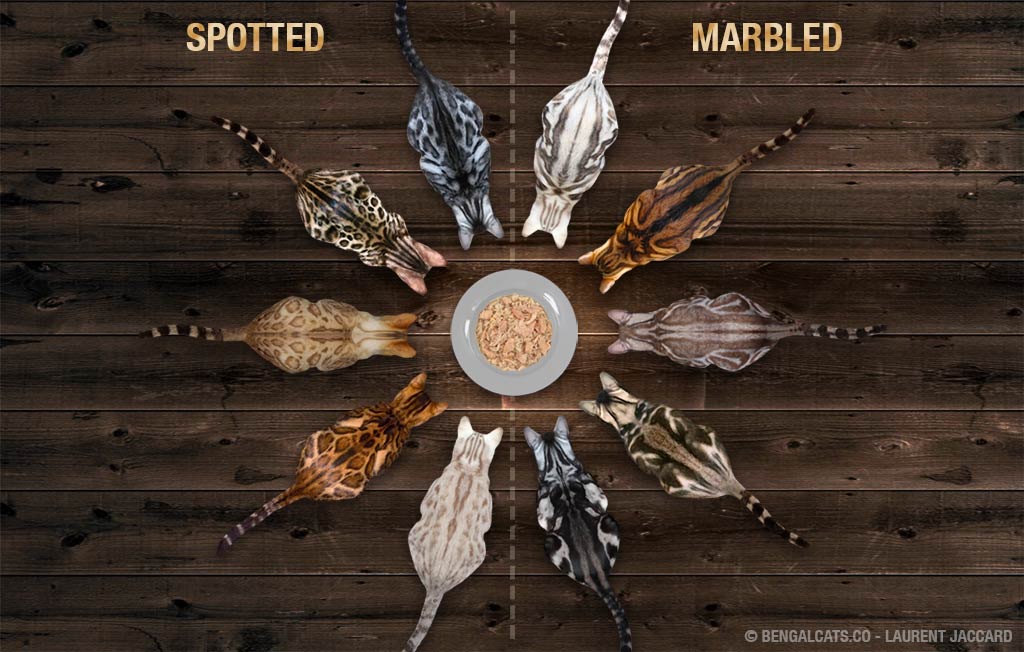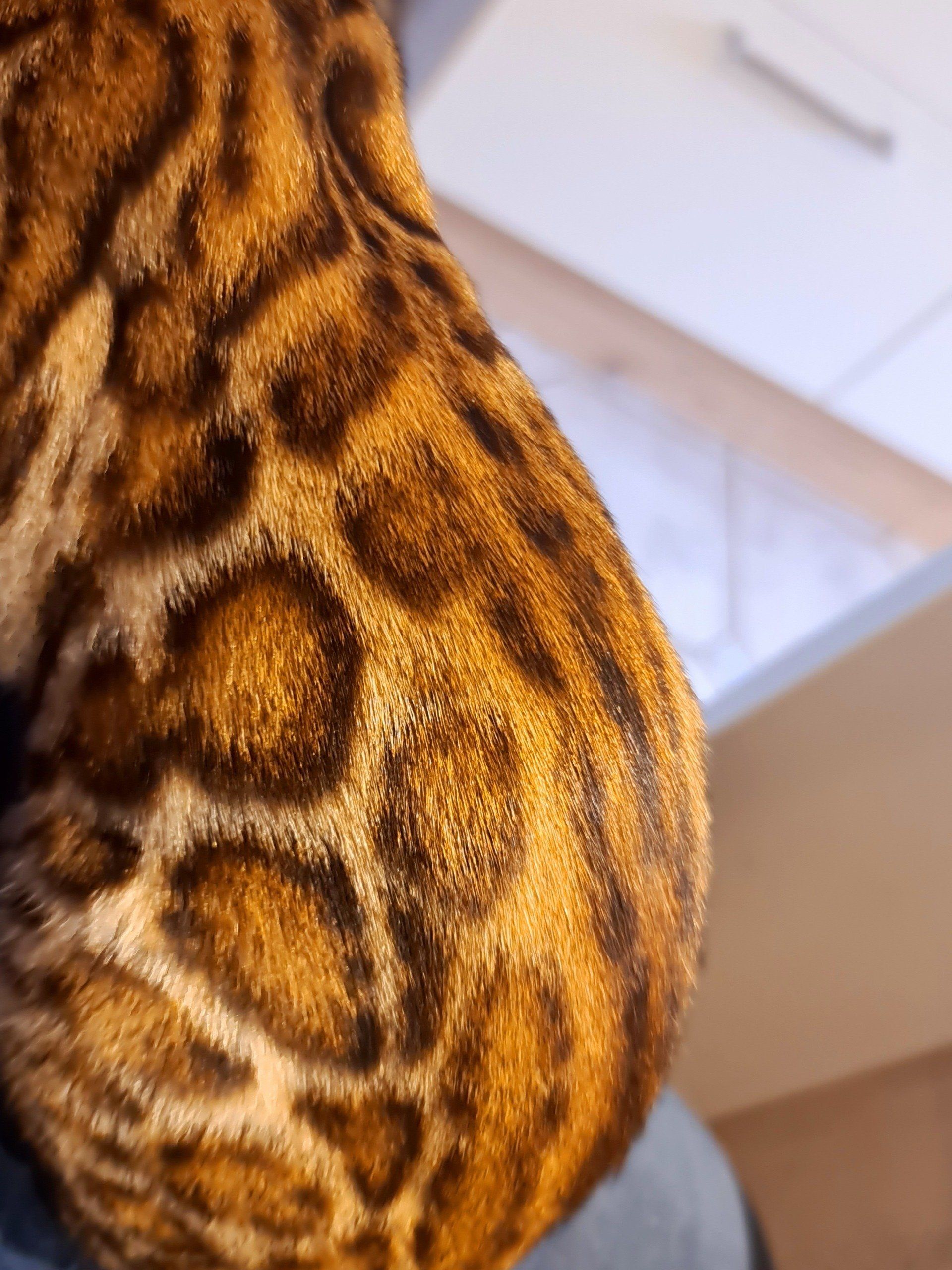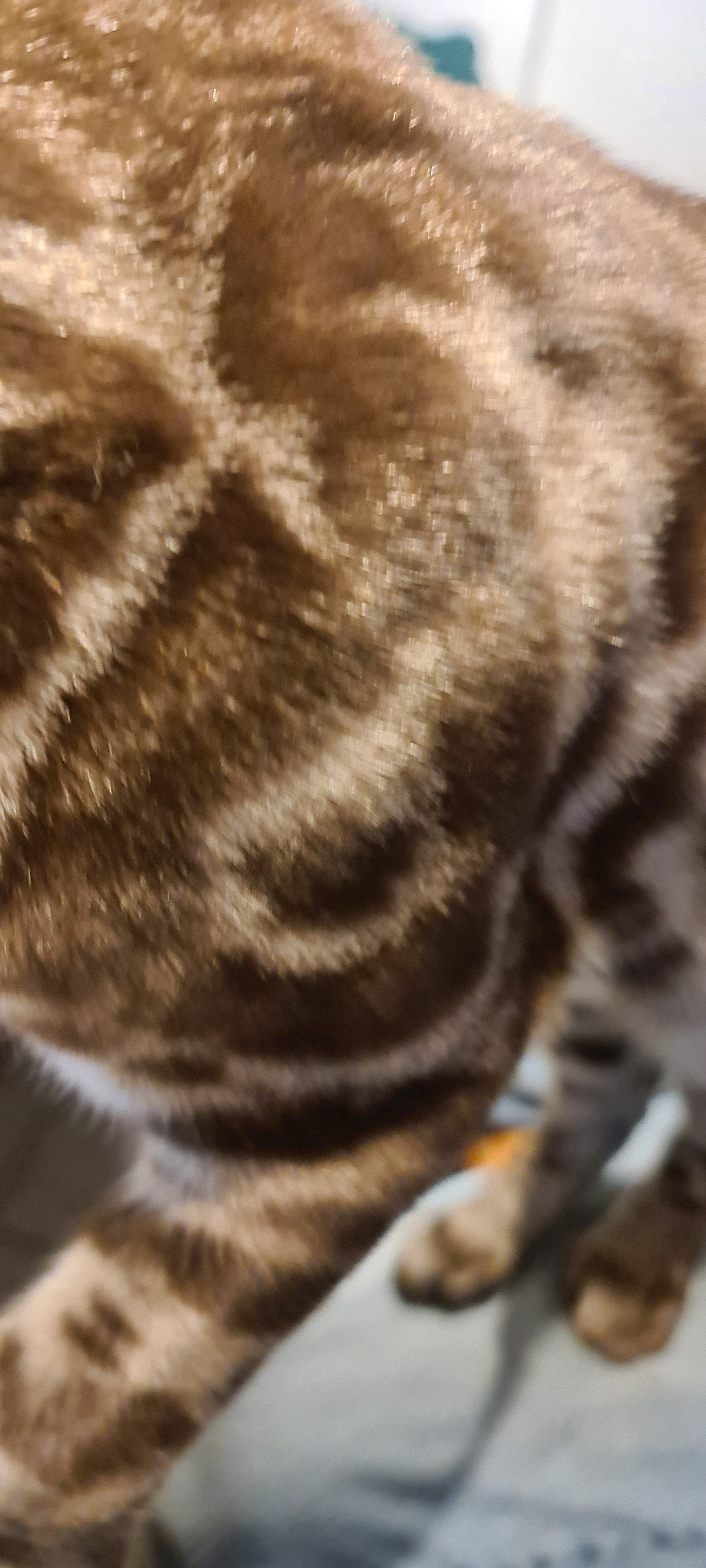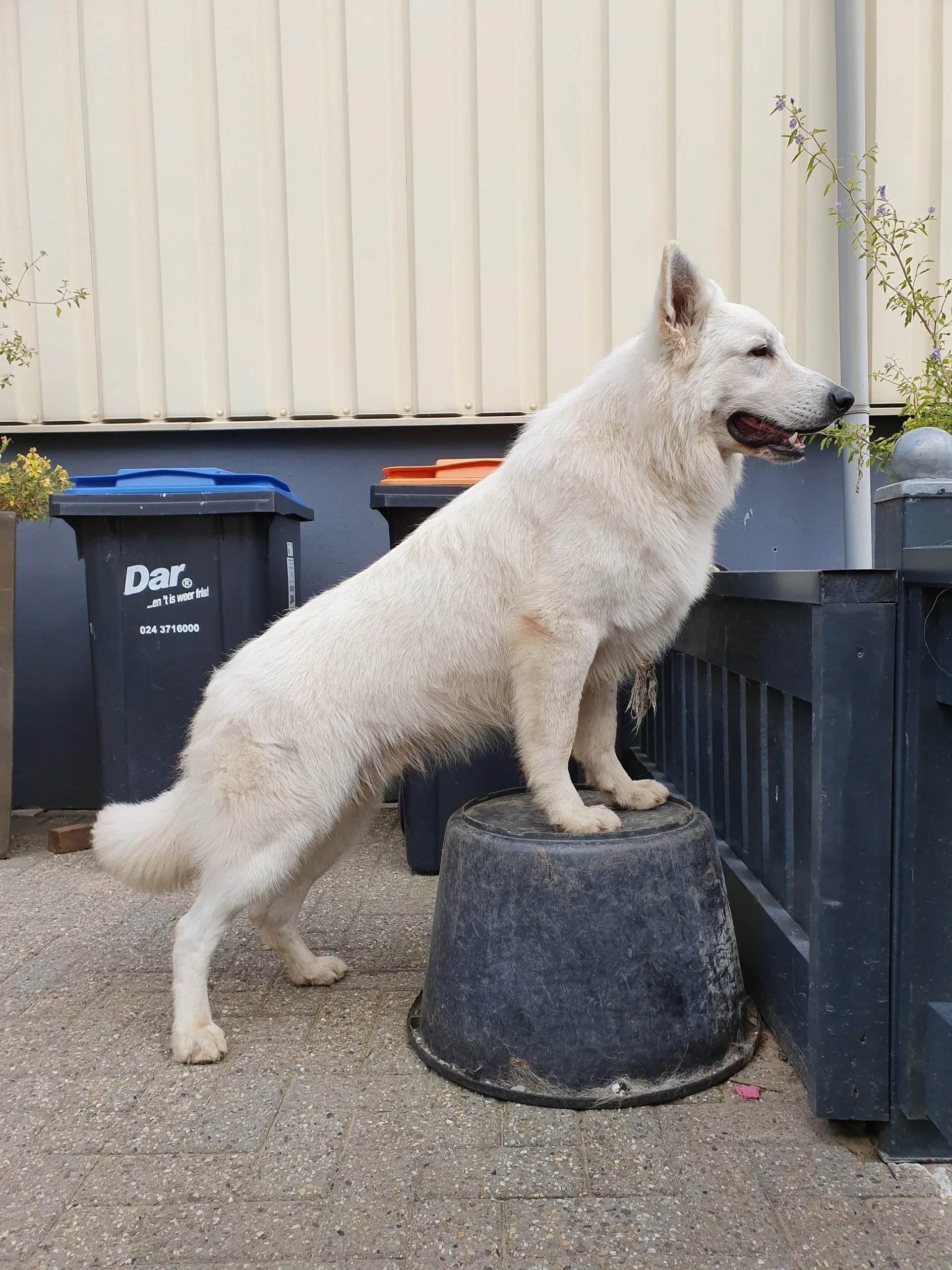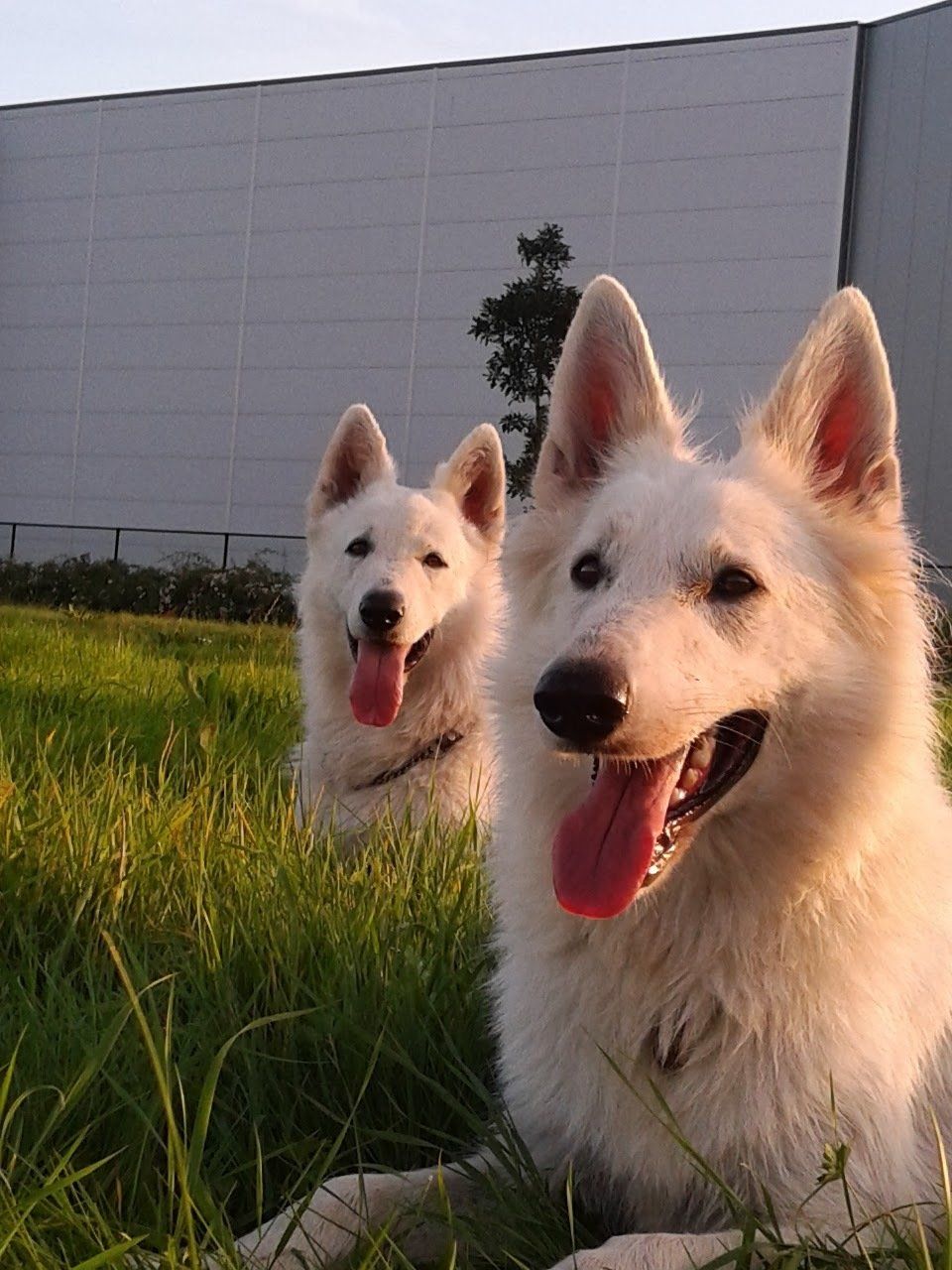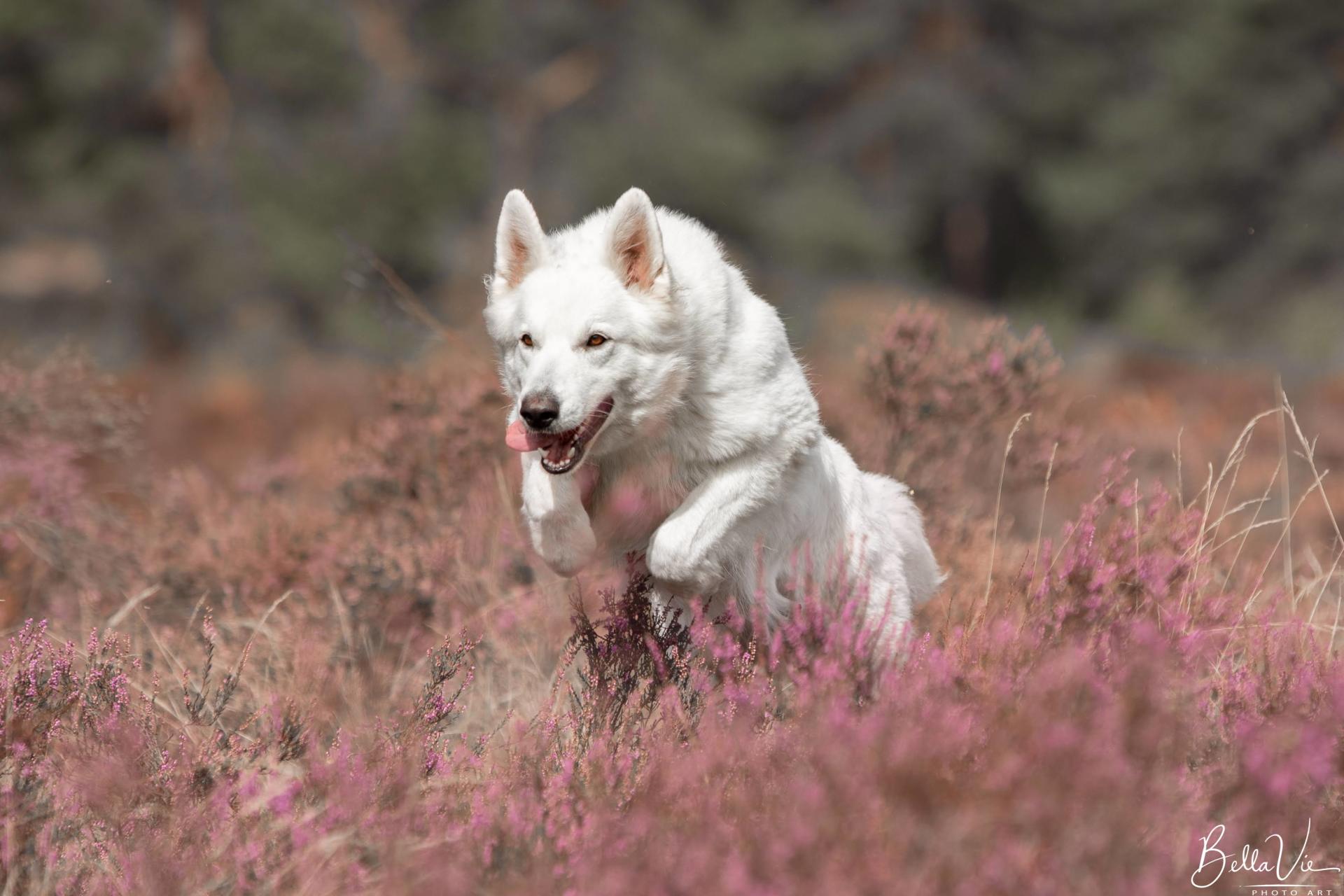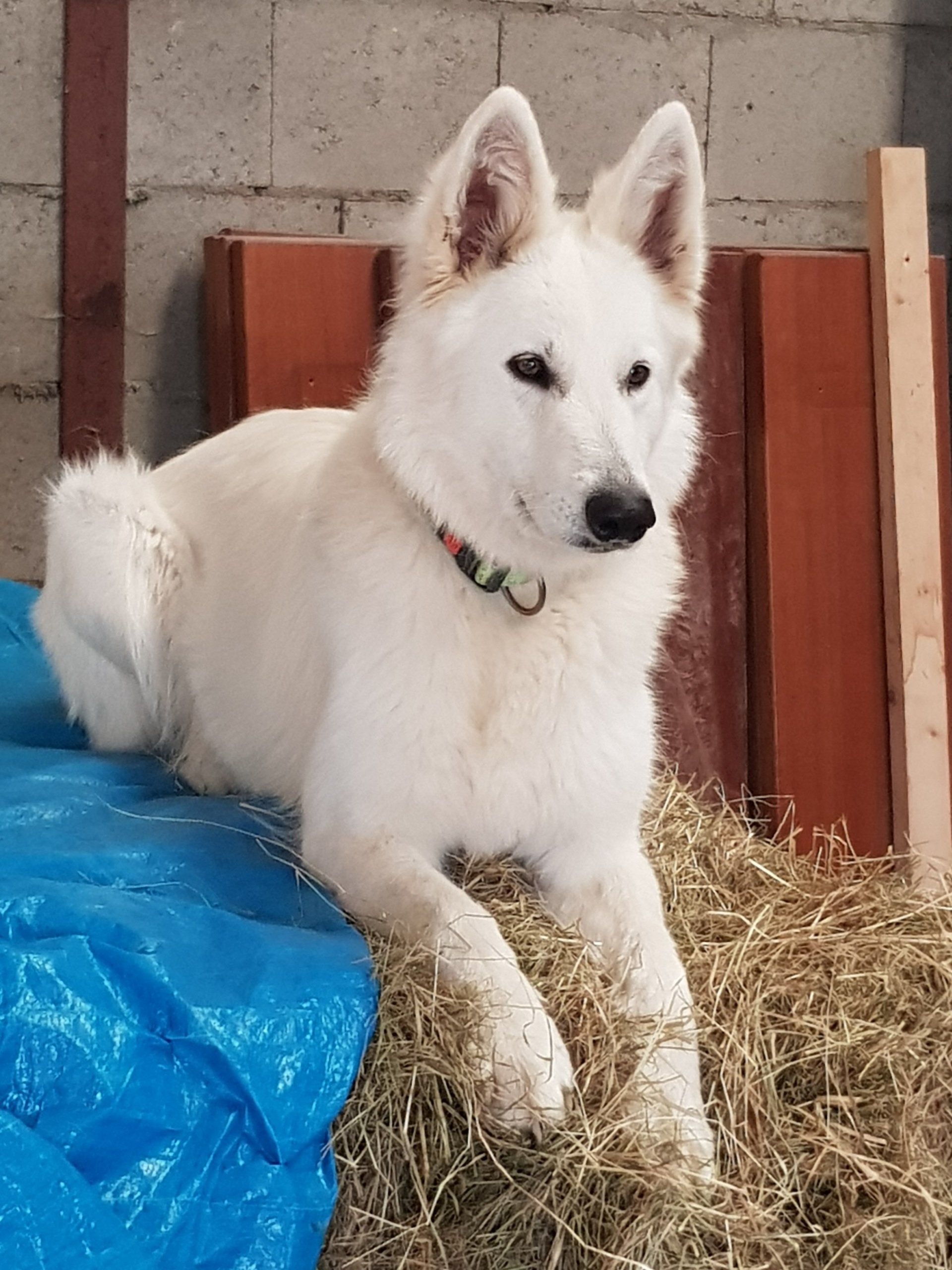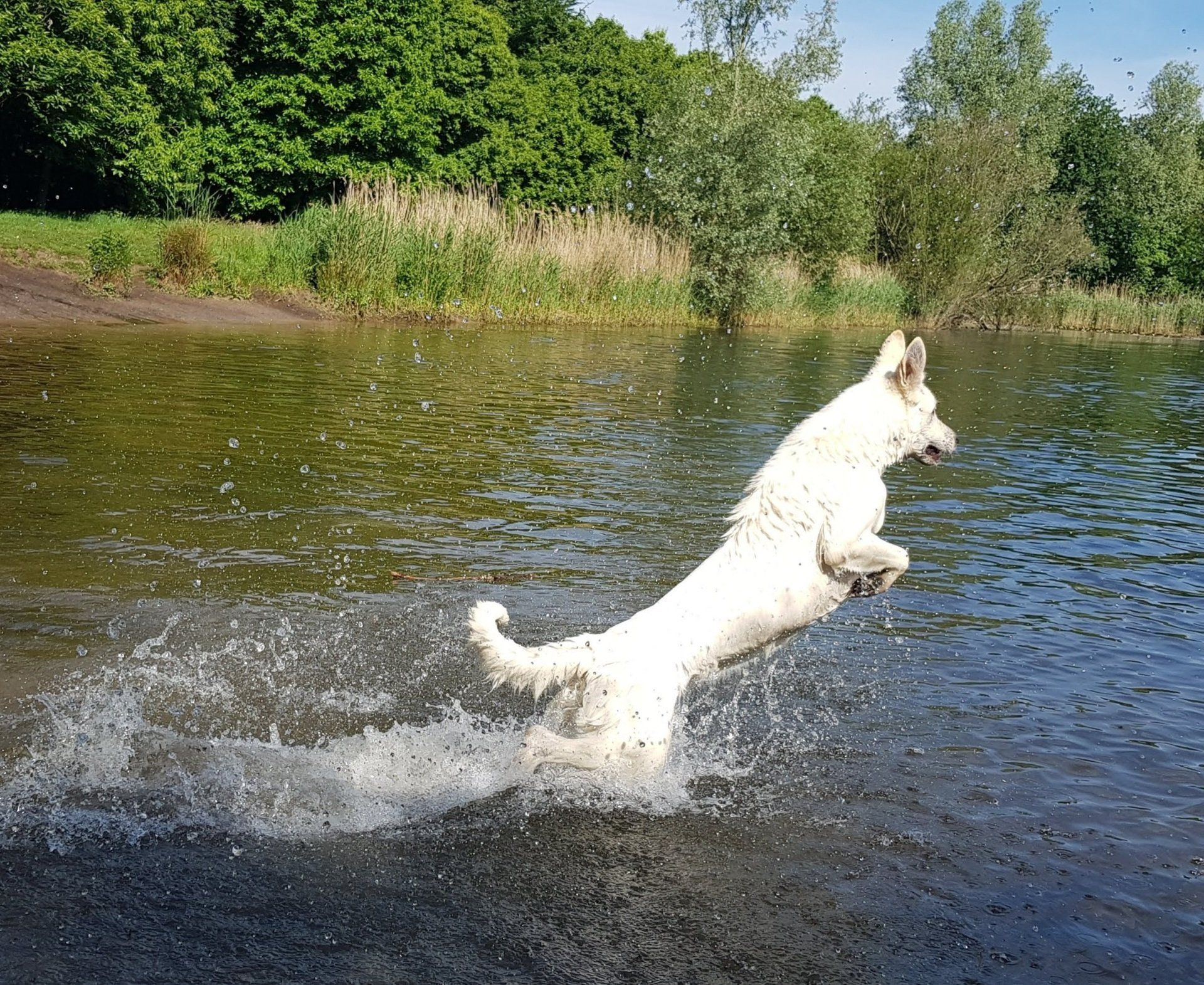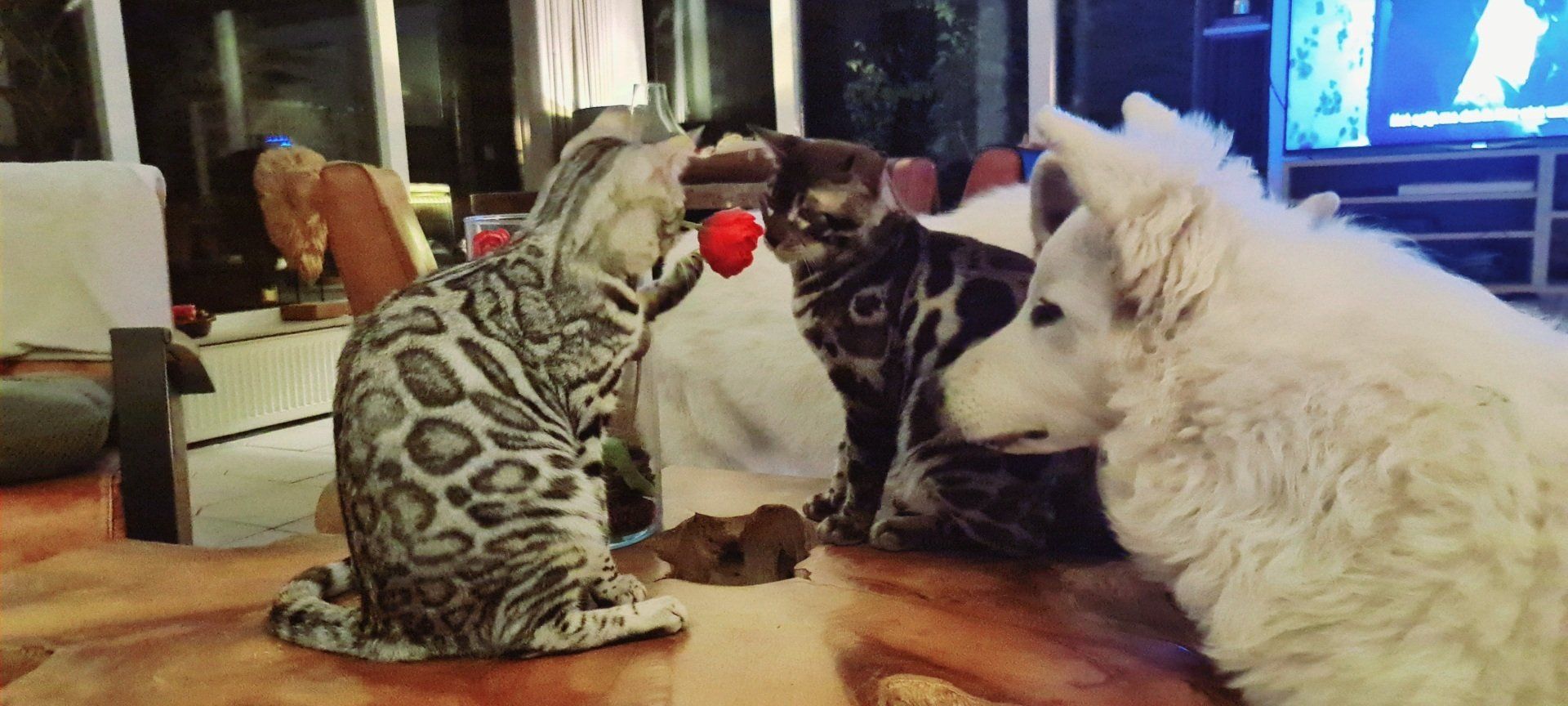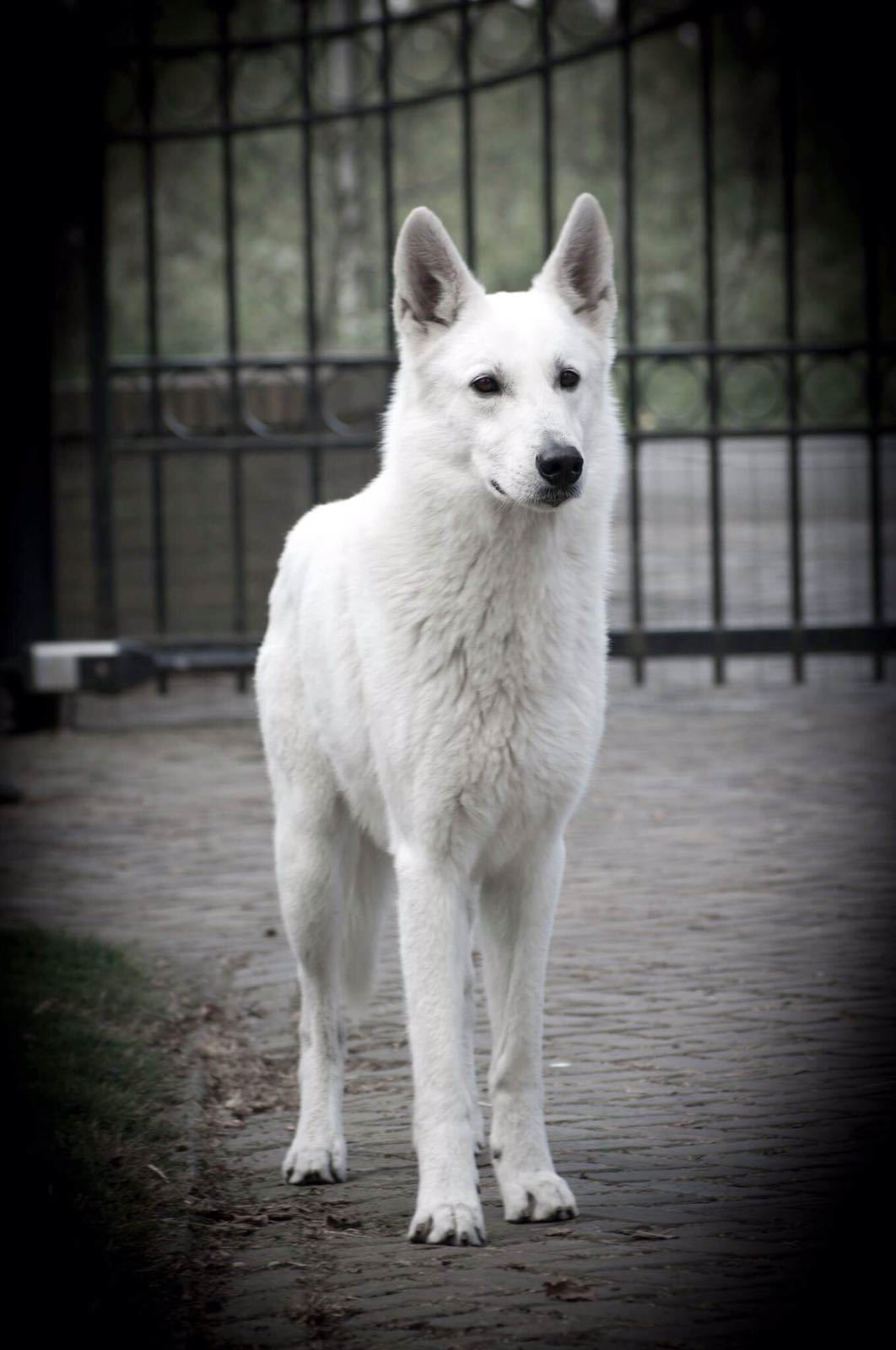Colors and Markings
Colors of the Bengal
There are 6 colors in the base, three of which will be recognized by TICA (The International Cat Association) at the end of 2020
The standard colors are
Brown
Snow
Silver
With the brown Bengal you can find the following properties:
Brown to pitch black markings
A black tip on the tail
Red nose
Brown, copper, gold, green, or hazalnut eyes
A white belly is preferred
The snow bong
Contrary to what the name suggests, these are not pure white Bengals.
In fact, the snow bengal consists of 3 genetic colors and names:
The seal lynx
The seal mink
From sepia seal
A snow seal lynx (Cs, Cs color genes) has:
Has a very light cream color.
Dark or light seal marks.
Dark seal brown mark at the tip of the tail.
Always blue eyes.
A Snow Seal Mink (Cb, Cs color genes)
Ivory, cream light brown color.
Dark seal brown tail tip.
Blue-green or turquoise eyes.
The Snow Seal Sepia (Cb, Cb color genes) has:
Ivory, cream, light brown color.
Various shades of seal sepia to dark seal sepia markings.
Dark seal brown tail tip.
Green or gold eyes
The Silver Bengal (the silver cannot be tested genetically) but will be A / A or A / a.
A Silver Bengal has:
As little tarnish as possible (Yellow / rust brown color.) In the coat.
Dark gray to pitch black markings.
A black tail tip.
A brick-red nose.
Green or gold eyes.
The Charcoal Bengal (Apb, a or Apb Apb genes)
The charcoal is darker than the traditionally recognized Bengali colors.
The black smoky charcoal color was mainly seen in the early generation F1 and F2 Bengal.
The charcoal property is inherited independent of color and can be found in every color class: brownm, silver, snow (lynx-charcoal, mink-charcoal, sepia-charcoal and even in blue).
Charcoals have a dark grayish / brownish or carbon colored background with very little or no reddish brown and a very dark mottled or marbled pattern.
Charcoals may also have a darker “mask” and a thick dorsal stripe, commonly referred to as the “zorro cape and mask”.
The mask resembles an inverted “Y” or a peace sign without the circle around it.
These charcoal masks can be very dark and eventually match the color of the black to black body shades.
The tail is dark brown / black or gray-black with stripes and a black tip
The Blue Bengal
The base color is pale blue gray to slate blue gray, the markings are blue to dark blue.
A gray tail tip.
Green, golden or hazelnut eyes.
Melanistic (solid)
Black markings and a black background.
No warm colors.
Faint to spooky highlight
Green, golden or hazelnut eyes.
Not recognized standard colors
Charcoal (Apb / a gene the real charcoal)
Blue ( D -Gen)
Melanistic (solid black) (a-gen)
Unrecognized colors can be bred and registered with TICA but cannot be shown.
A color test is the only way to be able to say with certainty what the cat is wearing and what it can inherit
When a color test has been performed on the DNA of the Bengal, the results of the A locus gene are indicated as follows.
A / A = Agouti, the Bengal has a visible pattern
A / a = Carrier of Non Agouti. This means wearing a Solid color (snow) Smoke (silver) or Melanistic (black) The cat has a visible pattern
a / a = Non-Agouti, the Bengal is Solid, Smoke or Melanistic. In this case, this Bengal has an almost solid colored coat
A Bengal can therefore carry a lot and depending on what it is crossed with, it can also inherit differently within a litter.
Glitter
While Bengals are the first domestic cats to have glitter, not all Bengals have.
You can tell the glitter from the sparkling effect on the cat's coat. Even in low light, you can see the shine of the glitter on the Bengal.
But what exactly is glitter? Glitter is a translucent hollow hair shaft that catches and reflects light. It is present all over your cat's coat.



